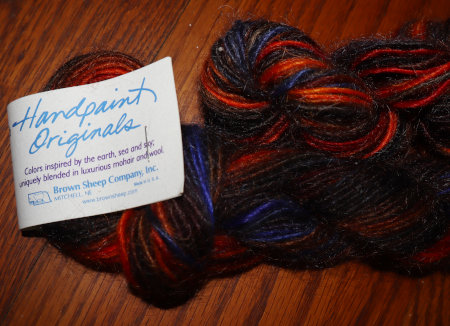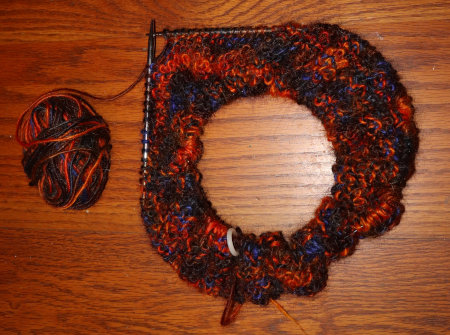Studying Japanese mending seemed to open up a whole new world for me, and I wanted something to experiment on. I had just the thing in mind, too, my old barn jacket. At one time, this denim jacket was my favorite fall and spring work jacket, and I wore it for years. It has a warm fleecy lining and the outer fabric is denim, which I love because it wears well and isn't prone to getting straw and hay stick in it (a huge plus when one works with barn animals!). Gradually, it got torn here and there, and the cuffs began to fray.
 |
| Lots of small holes on the jacket front and sleeves. |
 |
| Big rip in the back. |

|
| A series of tears on the underside a sleeve. |

|
| Even then, I got a bit creative in stitching down the large patch. |
As I worked on it, I remembered how much I liked this jacket. But there was still a lot that needed mending, so I stuffed it back into the mending box and forgot about it for several more years. Until I was stuck inside due to inhospitable winter weather and came across several interesting YouTube videos about visible mending. I pulled the jacket out again and gave it another look. It would be a good canvas for learning and experimenting!
The next time I was at the thrift store, I found some patching fabric that I liked. Actually, it was a pillow sham that I got for $1. I took it apart and gave it a good pressing. Perfect.
Then I made a start. The biggest tear was first, although it wasn't too bad when I spread out the jacket and laid the pieces back in place.

|
| Jacket right front with two patched tears. |
I stopped thinking about simply covering holes and tears, and began to think more about the overall affect on the jacket.

|
| In the first picture you can see the hole in the left sleeve. |
One problem that developed was because the outer jacket fabric and the lining have different fiber contents. That means they shrank at different rates! It wasn't terribly noticeable before, but the patches and embroidery cause the denim to pooch out in some places.
A problem becomes a design element! The result will be a quilted look that stabilize the fabrics.
Another problem is that, apparently, I don't have full ownership of the jacket.

|
| What's a human to do? |
Between mending my jacket and some knitting, my cold and rainy days are interesting and productive. Maybe I'll be able to wear the jacket again this spring.




















